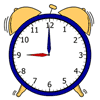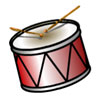Skip over navigation
Have a look at the sets of four quantities below.
Can you rank them in order from smallest to largest? To help you decide, you may need to find extra information or carry out some experiments.
Can you convince us that your order is right?

Or search by topic
Number and algebra
Geometry and measure
Probability and statistics
Working mathematically
Advanced mathematics
For younger learners
In Order
Age 7 to 11
Challenge Level 





- Problem
- Getting Started
- Student Solutions
- Teachers' Resources
In Order
Have a look at the sets of four quantities below.
Can you rank them in order from smallest to largest? To help you decide, you may need to find extra information or carry out some experiments.
Can you convince us that your order is right?
 |
Temperature
Of a kettle of boiling water
Of the centre of the sun
On a thermometer when you are quite well
Of the water in a school pond
|
 |
Speed
Of a rocket going up on bonfire night
Of a train
Of a ladybird walking along a leaf
Of a ball being thrown to your friend
|
 |
Time
Taken for a puddle of water to evaporate on a hot day
Taken for frogspawn to grow into a frog
Taken to walk across the playground
Taken for the moon to orbit the earth
|
 |
Sound
Of a clap of thunder
Of a teacher blowing a whistle
Of a tap running
Of a recorder being played by a friend
|
Why do this problem?
This activity offers an opportunity to combine skills from mathematics and science. Learners are required to make estimates, understand and use appropriate units, and find information to draw conclusions.
This problem highlights the fact that in science it is rather hard to calculate anything without making some sort of assumptions. Good science will clearly state and be aware of these assumptions; bad science will ignore them.
Possible approach
Give each pair of children a copy of this sheet which has all the quantities on it. Invite the pupils to try and rank the quantities but at this stage, make it clear that it doesn't matter if they are unsure. You may like to have a brief discussion about their thoughts.
Then, organise pairs into small groups and allocate two of the sets of quantities (i.e. two from temperature, speed, time and sound) to each group. The aim now is for each group to come up with an order for the quantities they have been given, together with a convincing presentation of evidence to justify their order. Allow pupils access to reference materials, measuring equipment, and
anything else that might be useful, and give them plenty of time for research and experiment.
Once they have finished, take each set of quantities and invite the different groups to present their rankings and reasoning. Ask the rest of the class to judge the different presentations on the strength of the evidence they have offered and the assumptions they have made. There might not be just one 'right' answer.
Key questions
What is stated precisely and what details are missing?
Do you have an idea of what order they might go in?
What could you do to find out how hot/how fast/how long/how loud that is?
Possible extension
Place Your Orders uses a similar idea with more advanced scientific content.Possible support
Order, Order! uses a similar idea but with slightly less advanced content.You may also like
What Is the Time?
Can you put these times on the clocks in order? You might like to arrange them in a circle.

